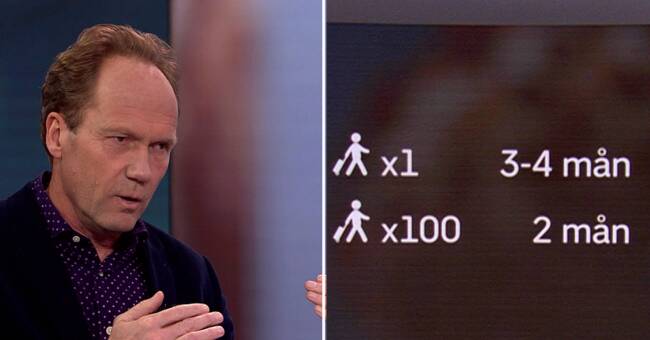It is enough for a person to be infected with the new virus for it to become as common as the old one within 3-4 months.
Mathematics professor Tom Britton made that calculation.
The precision is not exact according to himself, but approximate.
- It is assumed that the mutated variant is 70 percent more contagious.
If it is 40 percent, 3-4 months change to 5-6 months, he says in SVT's Aktuellt.
At present, it takes about five days from one person being infected to infecting another.
In Sweden, between 10-15,000 are infected every day.
Britton has used these figures as a starting point in her calculation regarding the new virus variant.
Should 10 people or 100 people with the infection come in, the spread will take place all the faster.
Then it is a matter of a period of less than three months and two months, respectively, if it were 70 percent more contagious.
- It is a very big advantage in if it can take 5-6 months, then we have time to vaccinate very many.
Instead of 3 months, then we do not have time to vaccinate as many, says Britton.
Previously made a misjudgment
Britton has previously presented calculations on herd immunity.
He then predicted that half of Stockholm's residents would have been infected with the coronavirus by the end of May and thus achieved herd immunity.
That did not happen.
- It was a misjudgment I made, he later admitted.
The missing link in the calculation was then that the professor did not think that society would change so much and that the spread of the virus was based on how the common flu is transmitted.

